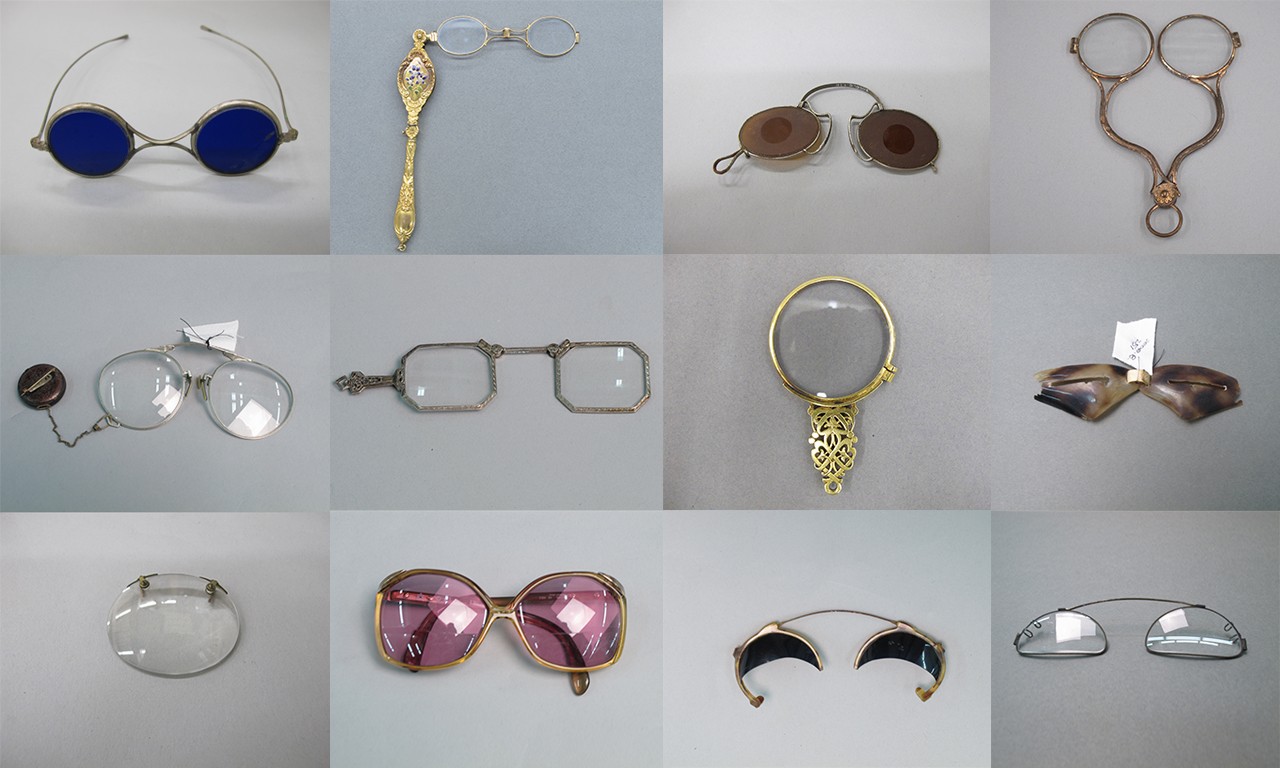 |
Glasses, 18th to 20th Century
Various Manufacturers; North America and Europe
Glass, metal, plastic and tortoiseshell
2000.8.13,.39,.80,.95.,113,.170,.176,.225,.244,.251,.284,.537
Gift of Dr. and Mrs. Richard Preston |
To See or Not to See
Twenty-Twenty is perfect vision, it’s said that it is hindsight, and mostly importantly it’s the new year. To better prepare for these next 355-some-odd remaining days of this calendrical sight pun, today’s Bowers Blog post focuses on vision enhancement. Twenty years ago, the Bowers Museum received a collection of 843 pairs of eyeglasses and cases. This collection happens to constitute one of the largest single collections in the museum’s possession, but it is rare to find an opportunity to post about what is mostly corrective eyewear. In today’s post we look at a brief history of eyewear and a few of the interesting styles featured in our collection.
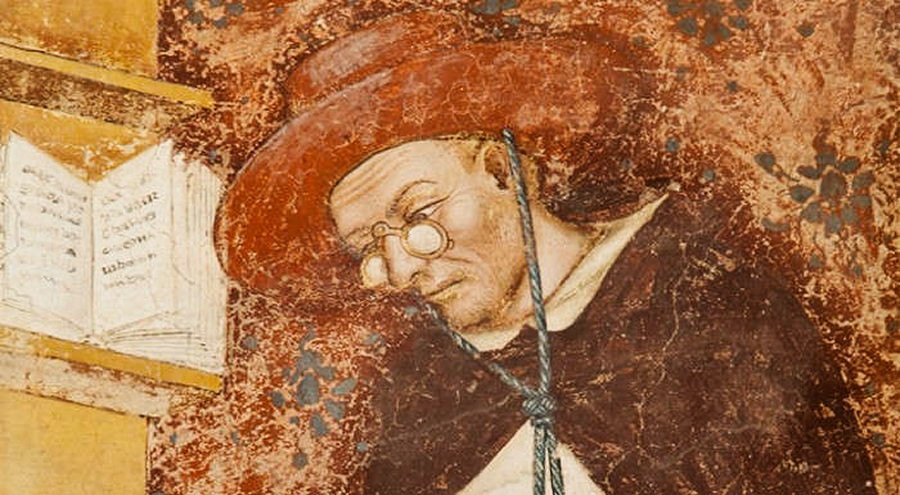 |
First Artwork in which Glasses are Depicted
Murals in the Chapter House of the Seminario attached to the Basilica San Nicolo, 1352
Tommaso da Modena |
Historic Spectacles
The usage of glass to assist with sight likely began right around the turn of the first millennium. Scattered texts reference the Roman Emperor Nero using an emerald to assist him in watching gladiators without any glare and the writer Seneca was said to have used a glass sphere filled with water to read. Glass spheres and reading stones were used until the late 13th century when craftsmen in Northern Italy—either Pisa or more likely the glassblowers of Venice—began refining the glass into smaller lenses. Frames made out of wood, horn or metal evolved over the next few hundred years and other advancements such as a bridge connecting two lenses so that they could rest over the nose, temples so that the glasses could be balanced on one’s ears, the bifocal lens so that people that are both nearsighted and farsighted can see with one pair and much more developed over the same lengthy timeframe.

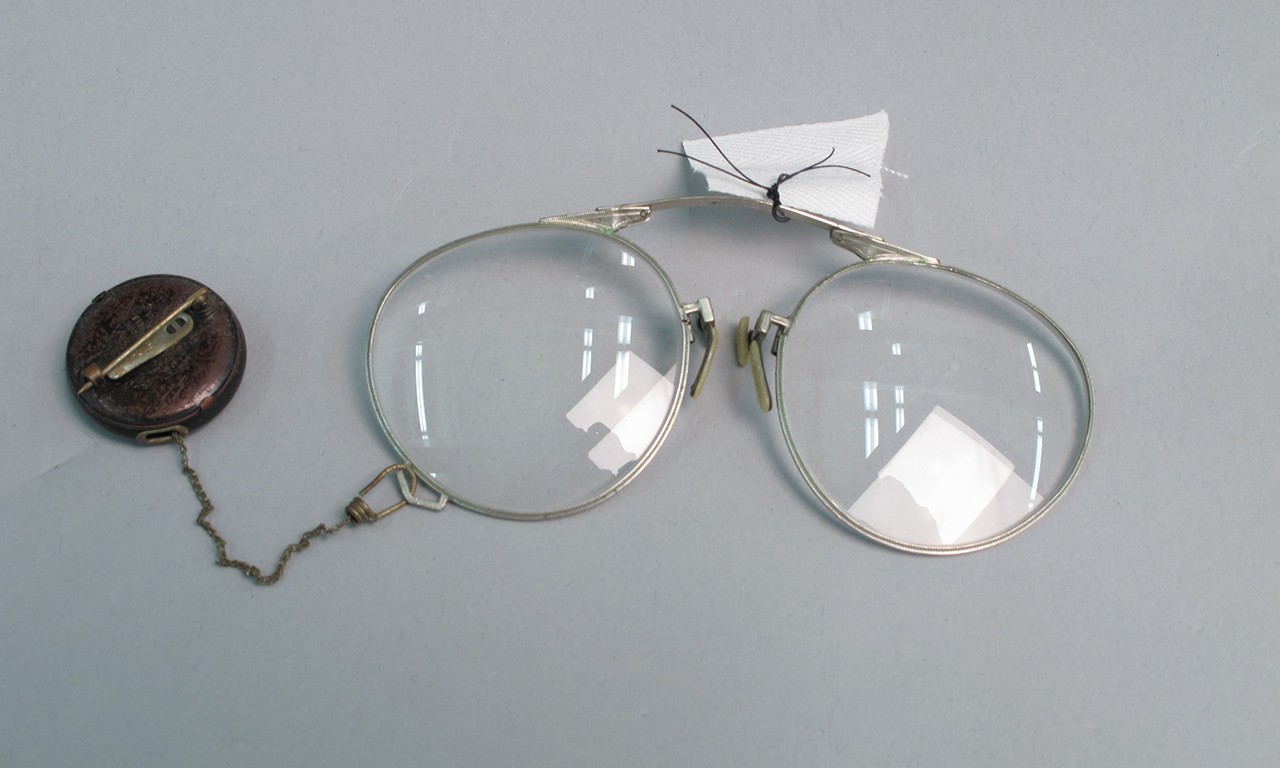 |
Pince-nez Glasses, late 19th to early 20th Century
probably Europe
Glass and metal
2000.8.13
Gift of Dr. and Mrs. Richard Preston |
Pincer Movement
Pince-nez is French for pinched nose, a style of glasses that rely on the tension of a metal spring to sit on the bridge of the nose. Though this style of eyeglass was likely among the earliest to have been used, dating as far back as the 14th century, it was revived in the 1880s through usage by iconic Americans such as Teddy Roosevelt and included in popular fiction like Sherlock Holmes. There is a significant amount of variation within this style.
|
|
Scissor Spectacles and Lorgnette, 18th to late 19th Century
Various Manufacturers; United States or Europe
Metal, paint and glass
2000.8.284,.39
Gift of Dr. and Mrs. Richard Preston |
Scissor Lift
Scissor spectacles were a forerunner to the lorgnette, both varieties of handheld lenses though the former held a far more utilitarian function. Invented in the late 18th century by a German optician, these glasses let the user manually set the distance between the lenses. They would be worn around the neck and held at first from a handle with early models and later—as is the case here—just from their joint. Seeing the benefit of more unobtrusive eyewear that could be held from the side rather than the center, the lorgnette was created. While scissor spectacles and lorgnettes were used concurrently the latter found better footing in high society where they were used like modern opera glasses in theaters or at other fancy events.
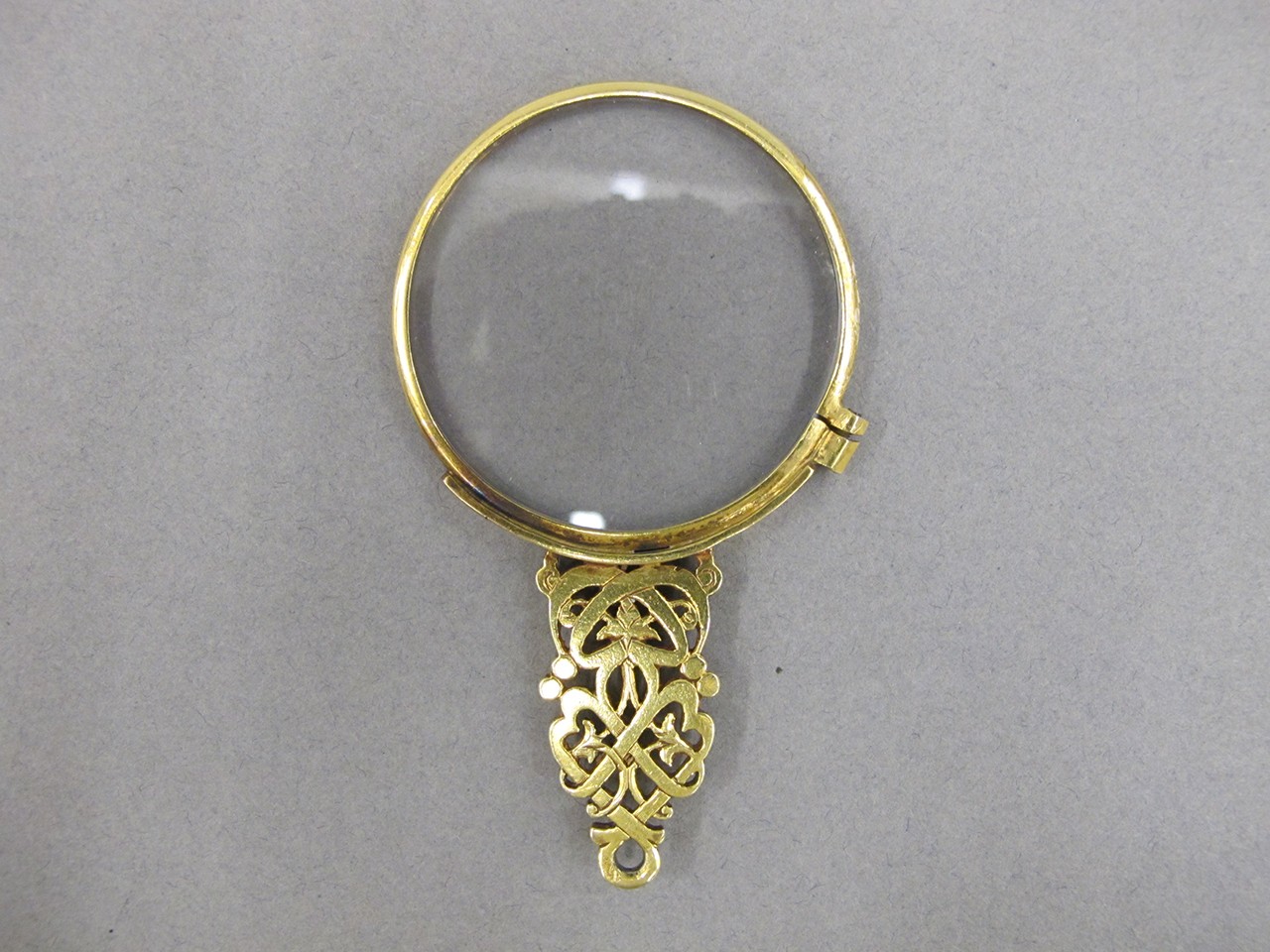 |
Monocle, 18th to early 20th Century
United States or Europe
Metal and glass
2000.8.225
Gift of Dr. and Mrs. Richard Preston |
Or as Cyclopes Call Them: The Usual
Morphologically closer in appearance to the single glass spheres that were the earliest optical correctives, monocles were not actually invented until the 18th century under the name eye ring. Rather than being effective tools to help with one’s eyesight, these were accessories of upper echelon men that were often socketed with fake lenses.
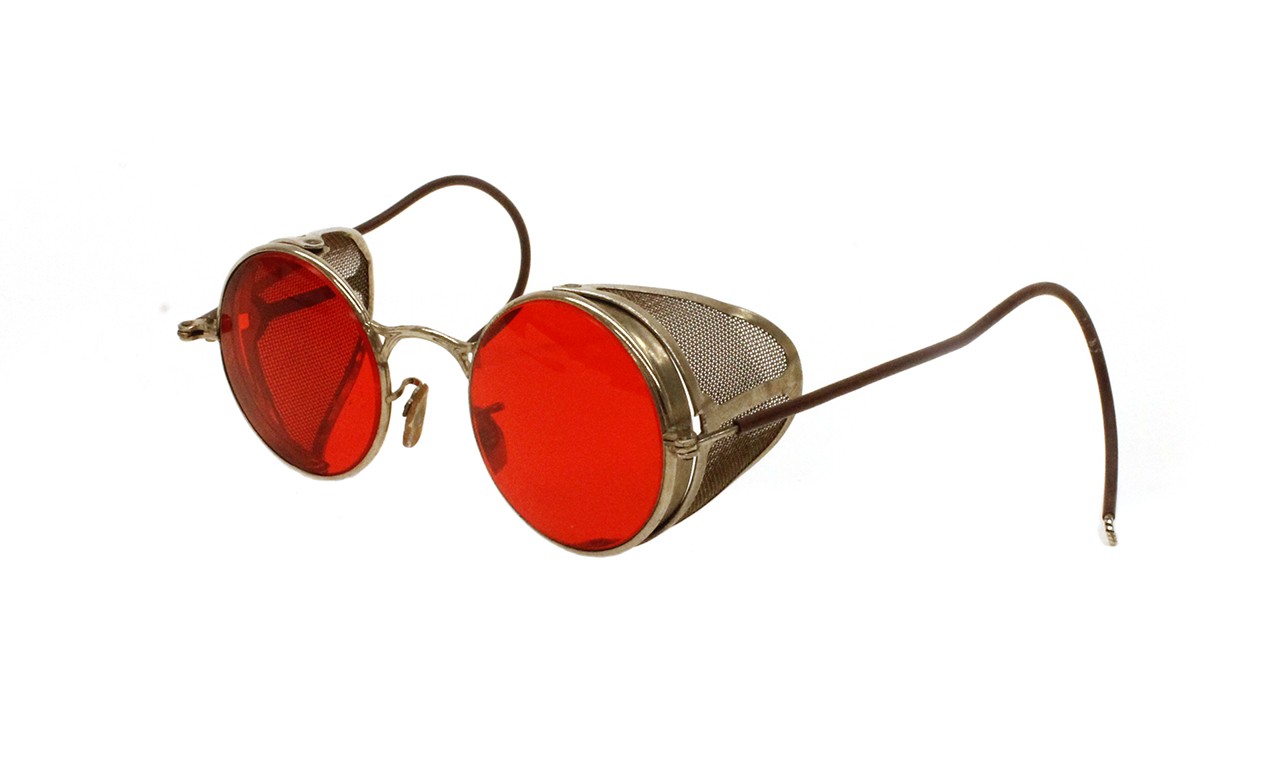 |
Protective Goggles with Red Lenses, early 20th Century
Possibly Welsh
Silver, leather, and glass
2000.8.25
Gift of Dr. Richard Preston and Mrs. Preston |
The Safety Dance, Now for Eyes
Like other genres of eyewear, protective goggles also have a long history of usage. There is evidence that mica was sometimes socketed into medieval helmets to prevent shards of shattered wooden weapons from entering helmets. These goggles were introduced around the turn of the 20th century for usage by machinists and drivers. Hardier than any glasses before them they were made with steel frames, mesh side shields and either specially tempered glass or safety glass, a composite of glass and an early plastic. The red tinting would have been achieved with celluloid and doubled to help prevent the glass lenses from shattering.
|
|
Glasses, 18th to 20th Century
Various Manufacturers; North America and Europe
Glass, metal, plastic and tortoiseshell
2000.8.251,.170,.359,.113
Gift of Dr. and Mrs. Richard Preston |
No End in Sight
Of course, this just scratches the surface of the eyeglasses in the Bowers' collections. More interesting selections include: carved slit goggles created by the Inuit to prevent snow blindness, Civil War era sharpshooter glasses which are frosted everywhere but at their center to better allow the user to home in on a target, manual transition lenses pivoting on a hinge and a variety of modern-style glasses made by Christian Dior and others. There are as many types of glasses as there are faces to put them on. As we head into 2020, be sure to keep these different glasses in mind and in sight.
|
|
Clip-on Glasses, 1930s or '40s
Various Manufacturers
Glass and metal
2000.8.244 and .537
Gift of Dr. and Mrs. Richard Preston |
Clip-on Eyes
Clip-on frames such as these two pairs would have been attached to full glasses frames for a variety of reasons including adding solar protection and effectively creating bifocal lenses. The right pair also features prosthetic add-ons which may have been used to hold back drooping eyelids. This style of clip-on would most likely have been used around the 1930s or '40s.
Many thanks to Eugene DeMayo, O. D. for offering a correction on the clip on glasses featured in this post. Text and images may be under copyright. Please contact Collection Department for permission to use. References are available on request. Information subject to change upon further research.




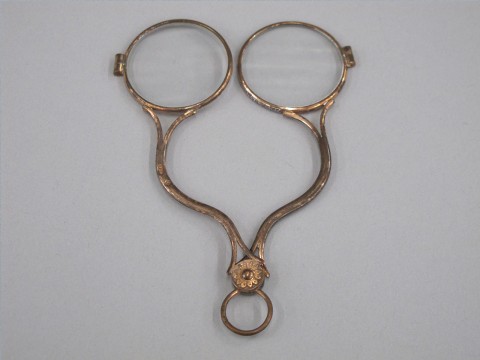
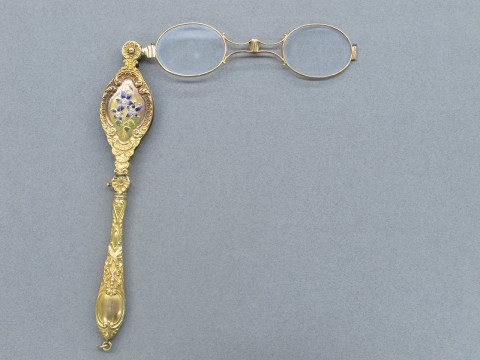



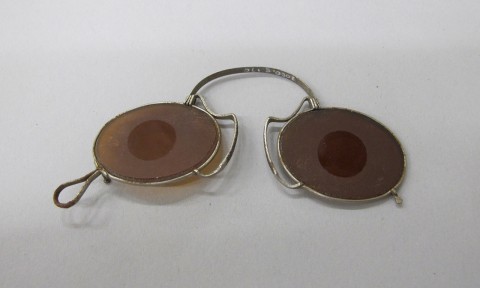
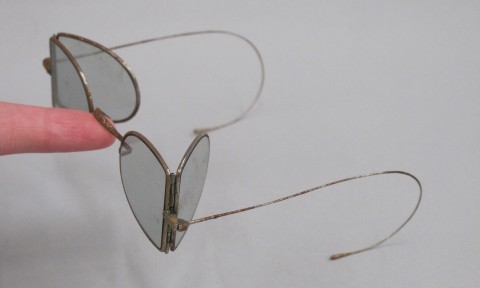
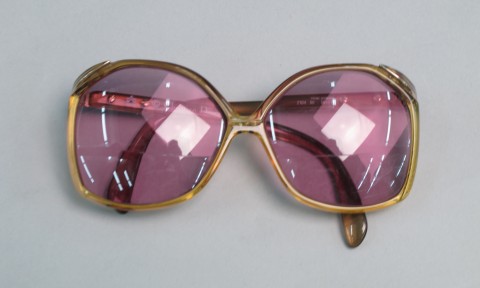
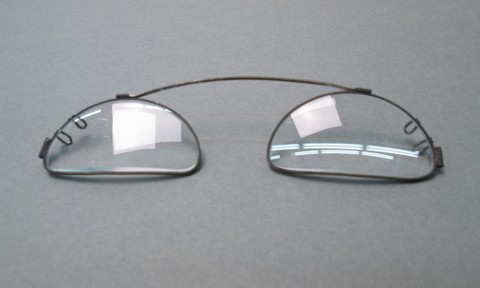

Comments